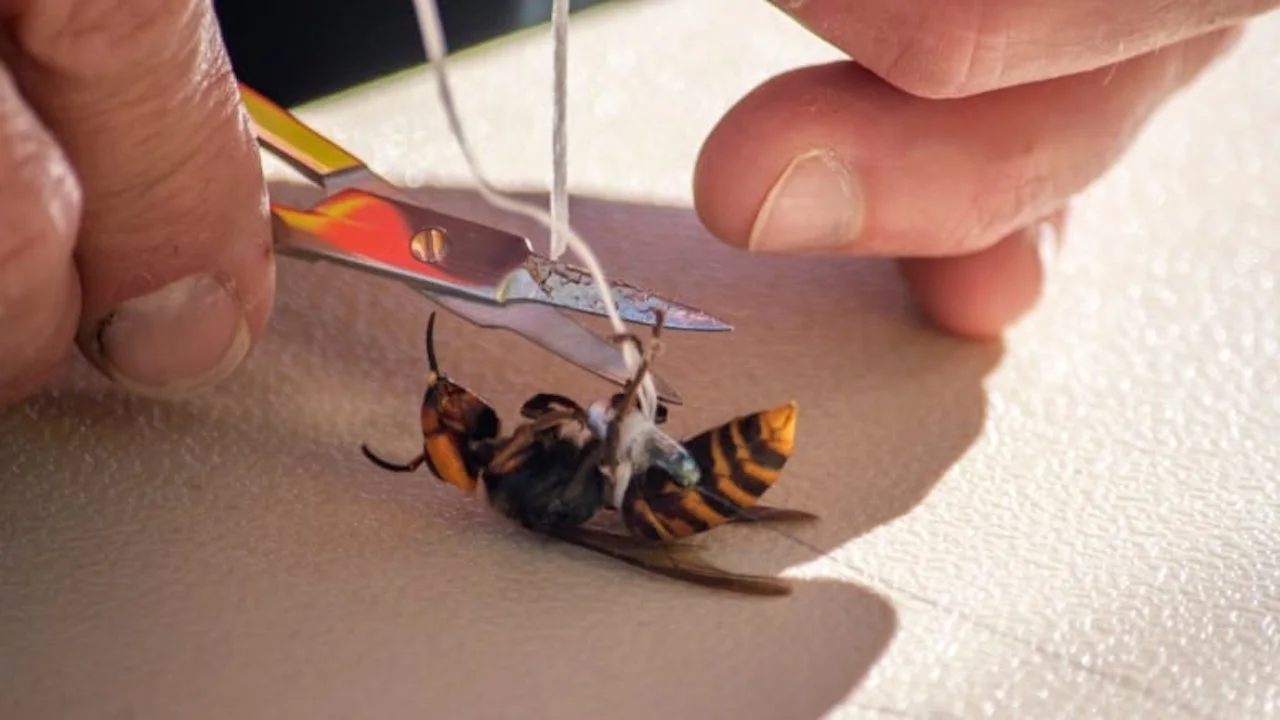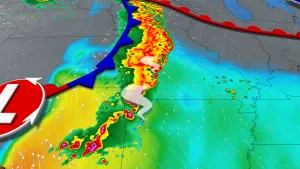
First Asian giant 'murder' hornet nest in U.S. found near B.C.'s south border
Entomologists with the Washington State Department of Agriculture say they have discovered what is believed to be the first Asian giant hornet nest in the U.S.
After weeks of surveillance and setting up a network of traps, the nest was located Thursday on a private property in Blaine, Wash., just south of B.C.'s Peace Arch Border crossing.
RELATED: Asian giant hornets: A lot more buzz than sting, experts say
Officials were able to attach radio trackers to three hornets, the second of which led them to the discovery of the nest, while one other managed to chew its tracker off.
"Stopping this cold is very crucial," said entomologist Sven-Erik Spichig with the WSDA.
"Only a few Asian giant hornets can take out 30,000 healthy honey bees in just a matter of a few hours," he said.

Entomologist used strawberry jam as bait to attract the hornets, then tagged three with radio trackers. One of the hornets led them to the nest, another managed to chew the tracker off. (Washington State Department of Agriculture WSDA)
The Asian giant hornet, sometimes called a murder hornet, is part of the same order of insects as bees, but can grow up to five centimetres long.
The hornets prey on all kinds of insects, including honey bees, and can quickly decimate colonies. Their natural range includes much of Japan, the Korean peninsula and coastal China.
HARMFUL TO HONEY BEES
While the hornets can inflict a painful sting on humans who get too close, they are most feared for their potential to harm local bee populations.
Some Asian giant hornets turned up in the province and in Washington state in the fall of 2019. Another was found in Langley, B.C., this spring.
A recent study revealed the large invasive hornet could spread throughout western North America unless there is a coordinated effort to stop them.
The study was published last month in the scientific journal Proceedings of the National Academy of Sciences of the United States.
It said the insect "could rapidly expand its invasive range throughout western North America absent coordinated mitigation efforts."
The study specifies that even under a worst-case scenario of rapid distribution, the hornet would remain confined to the coastal areas of B.C., Washington state and Oregon, where there are high levels of precipitation and temperatures are moderate.
NEST REMOVED
Entomologists successfully removed the nest early Saturday morning but said there is still a good possibility there are more in the area.
Thumbnail courtesy of Washington State Department of Agriculture WSDA.
The story was originally published for CBC.ca, with files from Chad Pawson.









